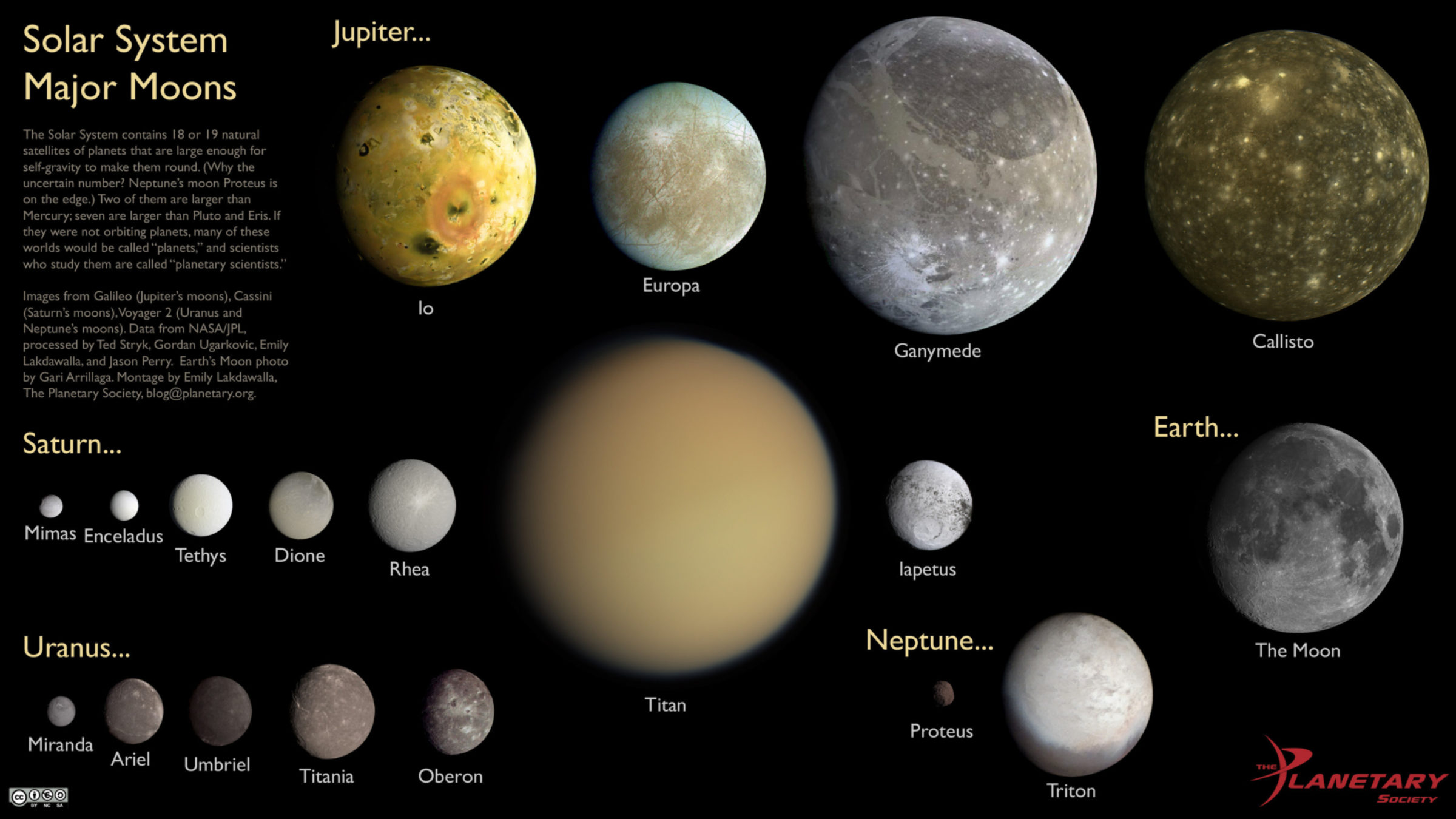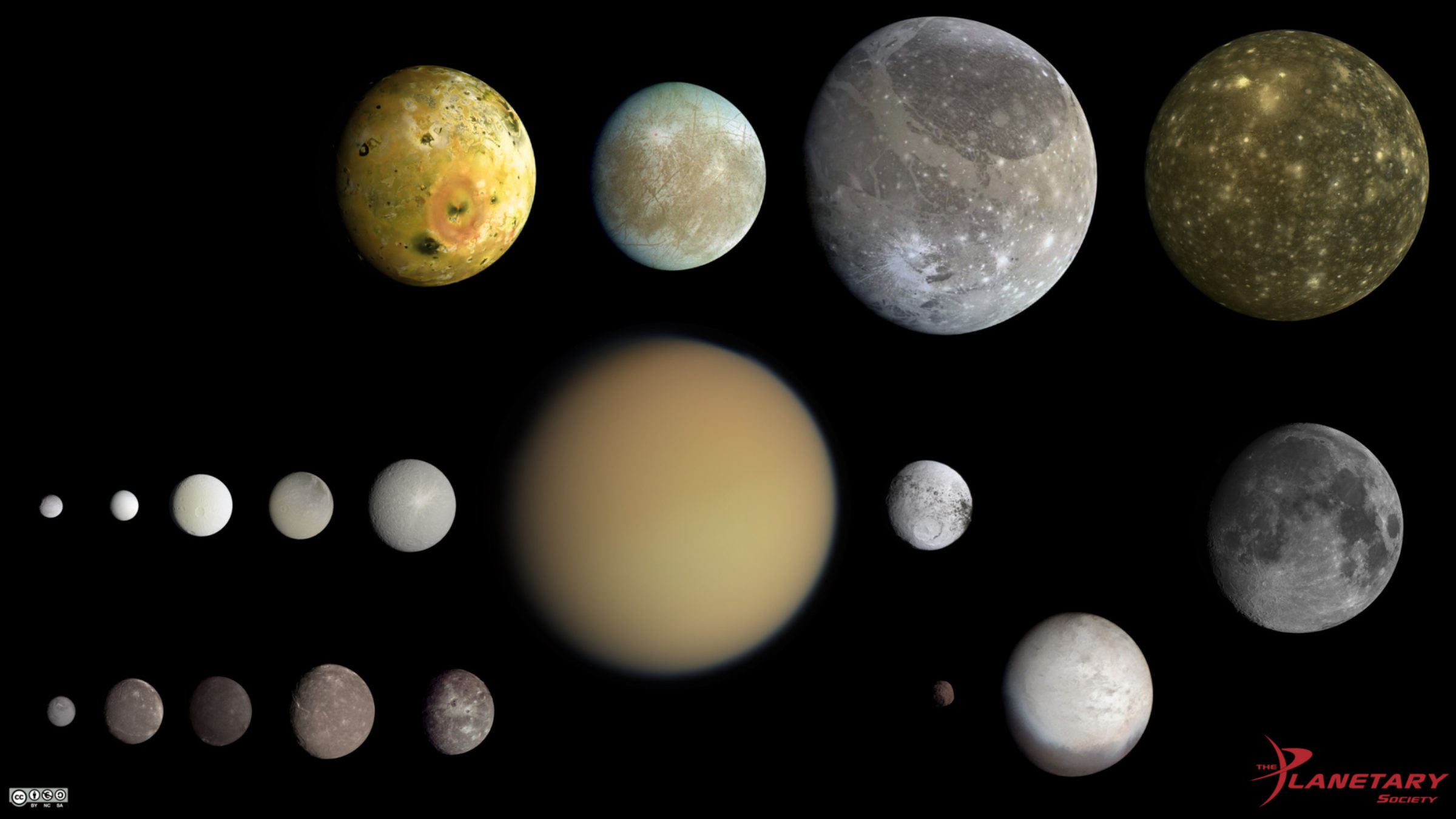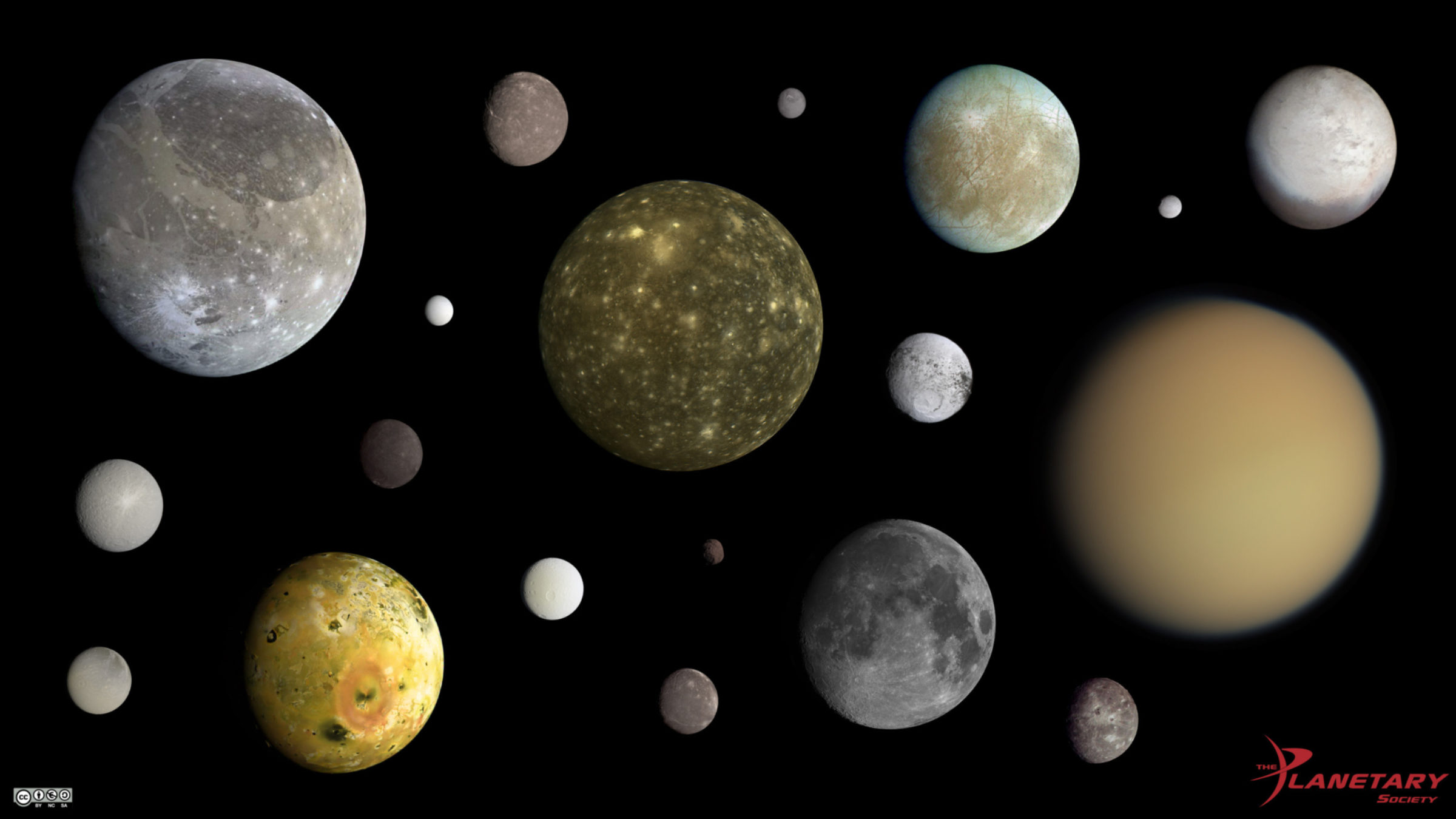Emily Lakdawalla • Jul 10, 2013
Scale comparisons of the solar system's major moons
Here's a presentation slide I've been meaning to put together for a while. It shows the major moons of the eight planets, to scale with each other. Below is a labeled version. You can download one without text here, and if you scroll down I've got a couple of alternative layouts.
Note: it's been pointed out to me that the Callisto image is from Voyager, not Galileo. I'll fix the text on the image eventually. --ESL

Here are some alternative unlabeled versions:


For the next one, I used a different Iapetus image, because it's adjacent to the Uranian moons Oberon and Ariel for which we don't have good lower-phase (fuller) global views; putting in the higher-phase one I used above made it look too big. Ganymede looks a little small for the same reason, and also because Titan's atmosphere makes it look bigger than it actually is.

Support our core enterprises
Your support powers our mission to explore worlds, find life, and defend Earth. You make all the difference when you make a gift. Give today!
Donate

 Explore Worlds
Explore Worlds Find Life
Find Life Defend Earth
Defend Earth

